Qantas flight from Perth to Kalgoorlie forced to turn around mid-air after mechanical fault
>
Another Qantas plane has been forced to turn in the air after a week of horror of returns and emergency landings for the flagship airline.
Flight QF1608 from Perth to Kalgoorlie in Western Australia was forced to circle over the capital city due to “mechanical failure” on Tuesday.
The Fokker 100 aircraft took off at 3:50pm and was airborne for only 50 minutes before making a safe landing at Perth Airport.
A Qantas spokeswoman said the hour-long journey was cut short due to a “minor mechanical issue” that delayed the flight by more than three hours.
She said the plane could have continued to Kalgoorlie, but a lack of engineering support in the city meant it was inspected by engineers in Perth.
The latest diversion is the latest in a series of incidents for Qantas with a plane forced to issue an emergency call mid-flight after an engine failed last week.
The Fokker 100 aircraft took off at 3:50pm on Tuesday and was airborne for only 50 minutes before making a safe landing at Perth Airport (pictured)
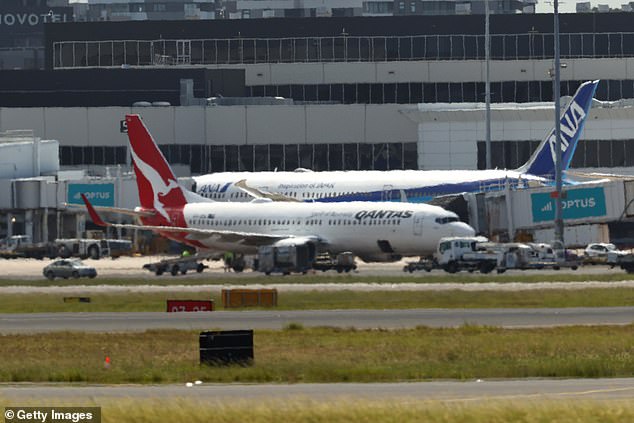
It comes after Qantas flight QF144 (pictured) from Auckland to Sydney was forced to put out an airborne emergency call midway through the three-hour journey on Wednesday.
Qantas flight QF144 from Auckland to Sydney last Wednesday was forced to issue an emergency call midway through the three-hour journey after an engine failed.
Then on Thursday, flight QF101 was forced to return to Sydney airport after suffering a “potential mechanical problem” on its way to Fiji.
The flight was headed for Nadi Airport around 9am when it turned around and landed back at Sydney Airport just before 11am.
“The pilots followed standard procedures and the aircraft landed normally in Sydney,” a Qantas spokesman said on Thursday.
On Friday, two Qantas planes were forced to turn around shortly after takeoff due to mechanical problems, marking the airline’s fourth diversion in three days.
Flight QF1516 from Melbourne to Canberra was forced to turn back on Friday morning after pilots noticed a problem with the Boeing 717’s winglets.
The plane took off from Melbourne airport at 10:10 a.m. and was in the sky for just 17 minutes before turning around and landing at 10:27 a.m.
It came minutes after pilots on flight QF430 from Melbourne to Sydney were alerted to a “minor engine problem” and turned the plane around.
The Boeing 737 aircraft took off from Tullamarine Airport at 9:28 a.m. before completing a long loop and returning just 50 minutes later at 10:18 a.m.

The Boeing 737 took off from Tullamarine Airport at 9:28 a.m. before completing a long loop, returning just 50 minutes later at 10:18 a.m. (Pictured, a Boeing 737 at Sydney Airport)
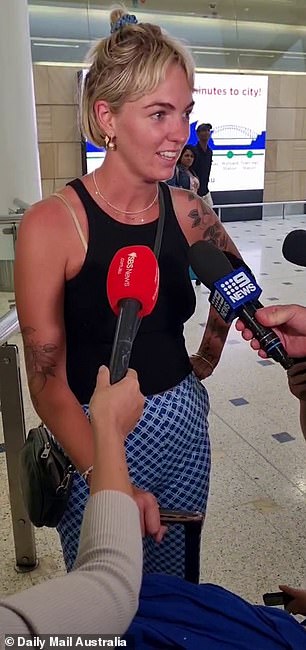
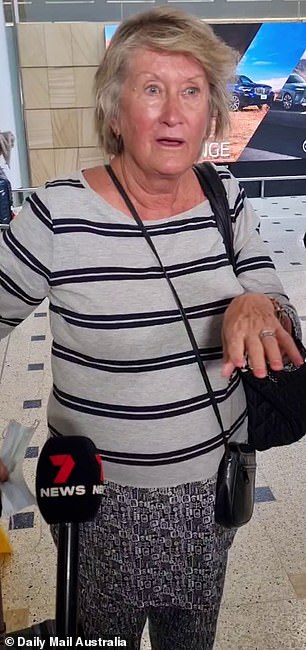
Georgia, left, said: “You wouldn’t have known something was really going on.” Meanwhile, an English woman (right) praised the passengers on board the flight as well as the crew for their calmness.
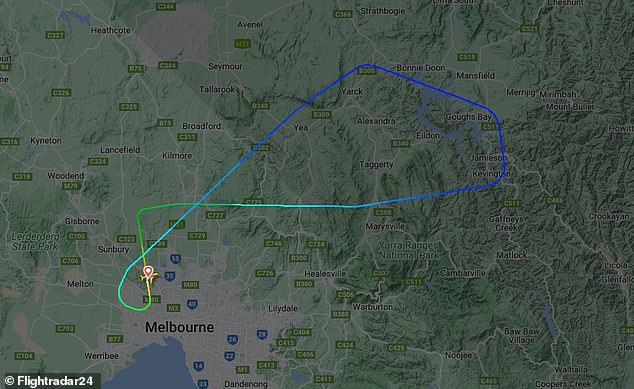
A packed Qantas plane traveling from Melbourne to Sydney on Friday was forced to turn around mid-flight after pilots were alerted to a “minor engine problem”.
A Qantas spokesperson told Daily Mail Australia that customers on the two diverted planes had reservations on other flights.
‘The aircraft landed normally, it was not an emergency or priority landing. Both engines remained operational throughout the flight,” they said of the flight from Melbourne to Canberra.
On Monday, a Qantas plane traveling from Adelaide to Perth was forced to turn around due to incomplete paperwork.
Flight QF887 departed at 3:35pm and almost reached the WA border before the Airbus A330 was suddenly forced to turn around and land back at Adelaide Airport at 6:50pm.
A Qantas spokesman said there had been no technical problems with the plane, but the correct paperwork had not been finalized for it to land.
The plane left for Perth at 7:30 p.m.
“Once the paperwork was finalized after engineering approval in Adelaide, the flight departed for Perth and landed four hours after the scheduled arrival time,” the spokesperson told the abc.
Passengers on the flight from Auckland to Sydney last Wednesday revealed they heard a loud bang after the left engine failed mid-journey.
However, most on board were blissfully unaware of the problem until they landed at Sydney airport and were greeted by a flurry of reporters.
The first travelers to get off the plane said they were not told the 747-800 had suffered engine failure, just that there was a problem after the loud bang.
Passenger Simone Schmidt told the media: “They told us nothing had happened, they were totally professional and we only found out when we got back on land.”
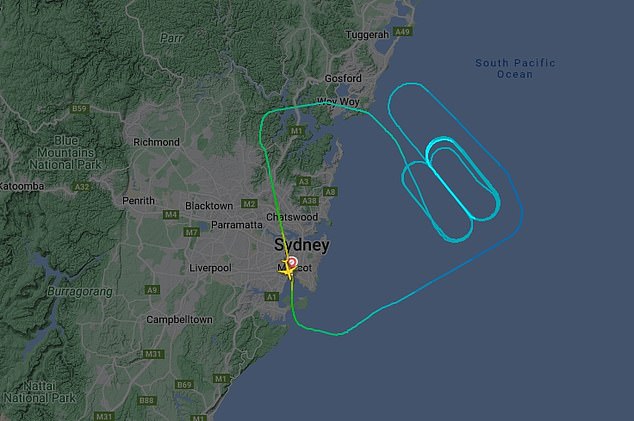
Flight tracking showed a Qantas plane traveling from Sydney to Fiji on Thursday circling off the coast after encountering a “potential mechanical problem”.
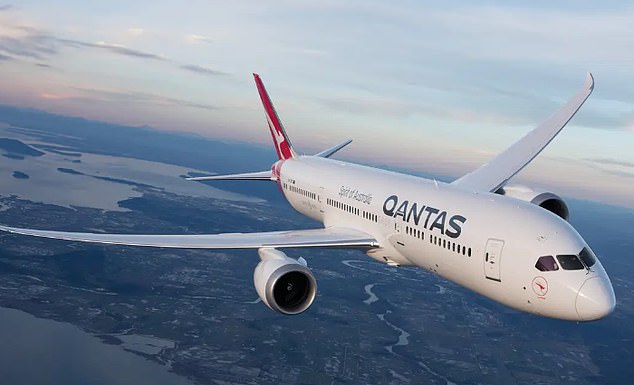
QF101 pilots received an indicator failure and had to land back in Sydney, and engineers are now examining the Boeing 737.
I only heard a thump and maybe a slight shudder, but that was it. We had no idea at the time, we didn’t realize the whole engine had blown, we just heard an explosion.
Her husband Colin added: “There was some gasping when we were told we were back on the runway, but by then we had landed.”
“Even then they told us it was a small malfunction.”
Another woman named Georgia said: ‘You wouldn’t have known something was really going on. We had no idea of anything that had happened, it was good.
Qantas domestic chief executive Andrew David said the airline averaged around 60 returns a year out of 10,000 across the industry.
It added that an estimated 400 to 500 engines a year on all narrow-body jets worldwide go out, and that Qantas’ 737 shutdown rate was “well below the industry average.”
“It’s important to put these things in context. In aviation, there are air diversions and air returns every day for a variety of reasons.
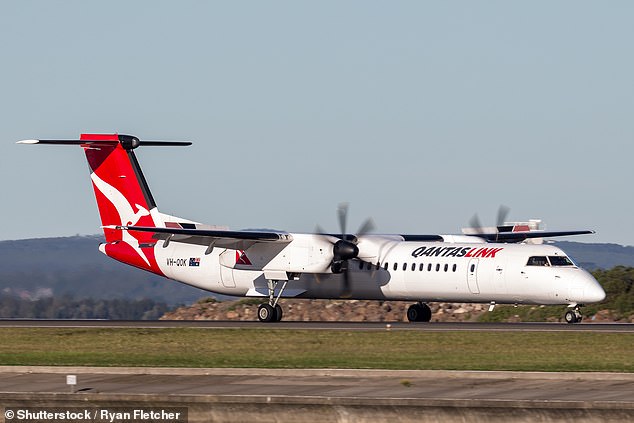
Qantas national chief executive Andrew David said the airline averaged around 60 returns a year out of 10,000 across the industry (a Qantas plane at Sydney airport pictured)
They generally reflect a great deal of caution and this is why flying is such a safe way to travel.
“We understand that when you hear reports of aircraft turning around, it is concerning.
“But people can be sure that aviation is built on safeguards, and one of those safeguards is that if something isn’t right, we take a conservative approach to the problem rather than move on.”
Mr David’s planes were complex pieces of machinery with millions of moving parts and it was not uncommon to have a problem with one of them.
“What’s important to know is that the planes are designed with that in mind and have a lot of redundancy built into them, and our crew are trained to deal with those situations so they can land safely,” he said.
Qantas will investigate all six incidents to identify and address the issues.
